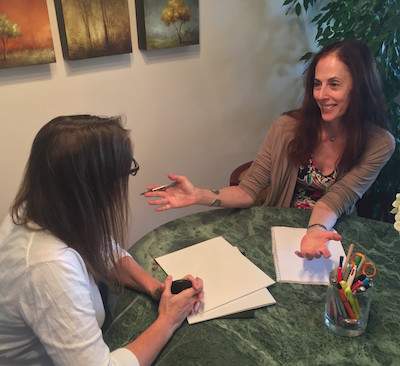 Worrying about where my high-functioning autistic daughter will live and how she will manage to navigate independently in a (mostly) unkind or indifferent world is hard enough. Or so I thought until I read the front-page headline in last Friday’s New York Times: “Broken Promise of Better Life After Being Abused at Willowbrook.”
Worrying about where my high-functioning autistic daughter will live and how she will manage to navigate independently in a (mostly) unkind or indifferent world is hard enough. Or so I thought until I read the front-page headline in last Friday’s New York Times: “Broken Promise of Better Life After Being Abused at Willowbrook.”
Remember when Geraldo Rivera exposed the horrors of Willowbrook in the 1970s? Severely disabled and non-verbal children were institutionalized in the Willowbrook State School, a Staten Island facility notorious for warehousing children and adults with developmental disabilities in nightmarish conditions. Even though I was still a teenager at the time—light years away from being the concerned parent of a child with disabilities—I was horrified by the pictures in the newspapers and the live images in Geraldo Rivera’s report. People of all ages were left alone naked or in rags, strapped into chairs or sprawling on the floor in filth, many of whom rocked endlessly and appeared half-starved.
Those images were indelibly burned into my brain. As an idealistic adolescent, I wondered how America—then the richest country in the world—could allow its most vulnerable citizens to be treated with such cruelty and neglect. In my naivete, I assumed that Geraldo Rivera’s investigation would put an end to the suffering of Willowbrook residents.
According to The Times, exposure of these conditions led to a lawsuit by the New York Civil Liberties Union and the Legal Aid Society resulting in a 1975 federal court settlement in which New York agreed to move Willowbrook residents into small group homes. Supposedly, each individual had a “constitutional right to protection from harm.” Boy, was that a relief to my teenage self. I went on with my life and mostly forgot about Willowbrook.
But now it turns out that the protection agreement made in 1975 was never honored. Forty years later in 2020, the Times is reporting that many of Willowbrook’s former residents—some 2,300 who are alive today—still suffer mistreatment in group homes where living conditions are reminiscent of concentration camps. Information obtained by The New York Times indicates that last year alone there were 97 allegations of abuse by group home workers against Willowbrook alumni. In addition, there were 34 allegations of psychological abuse as well as hundreds more allegations of neglect and mistreatment, including improper use of restraints or seclusion, medication errors and theft.
 One Willowbrook alum, a non-verbal 7 year old who endured 16 years of abuse, went home to her mother in her early 20s where she thrived. Described as friendly and cooperative, Migdalia could smile, feed her herself and drink from a cup. Unfortunately, her mother died when Migdalia was 47. In 2004, Migdalia went to live in a group home with 24 residents at Union Avenue and her life once again became a nightmare. Suffering repeated trauma, workers reported seeing Migdalia with bruises “a big purple blotch resembling a shoe imprint” as if someone had kicked her in the stomach, chest and legs.” She received no medical attention.
One Willowbrook alum, a non-verbal 7 year old who endured 16 years of abuse, went home to her mother in her early 20s where she thrived. Described as friendly and cooperative, Migdalia could smile, feed her herself and drink from a cup. Unfortunately, her mother died when Migdalia was 47. In 2004, Migdalia went to live in a group home with 24 residents at Union Avenue and her life once again became a nightmare. Suffering repeated trauma, workers reported seeing Migdalia with bruises “a big purple blotch resembling a shoe imprint” as if someone had kicked her in the stomach, chest and legs.” She received no medical attention.
Others in the Union Avenue home have also suffered. One man was hit in the head so hard he needed stitches and another man was struck repeatedly by the same Union Avenue worker as he ate. Now he eats hunched over his food in fear. Still worse, in 2017 a 69-year old man ended up in a hospital burn unit covered in second degree burns from a scalding bath or shower.
Could there be a more hideous nightmare vision for any parent of a child with disabilities? While my daughter is too high-functioning to end up in one of these mini-concentration camps, I worry that her quality of life could deteriorate after I’m gone. I can’t bear the idea that Samantha won’t be as warm, safe and well fed as she is today—or that she won’t continue to be the happy, affectionate and bubbly person who wakes up eager to embrace life.
When I vote for a president in November, I will choose someone who is kind, compassionate AND practical. (Not sure who that is yet!) I don’t care about charisma, stage presence or whoever turns out to be the debate champion. I want to know who will care about the rights of people with disabilities. There are 35 million Americans with a range of disabilities who are eligible to vote (including my daughter). That’s 1/6 of the electorate—not including the many family members and friends of the disabled.
If we all go out and vote, maybe, just maybe these disastrous “group homes” will close and the American dream can be resurrected for everyone.






 Marguerite Elisofon is a New York City writer and the author of My Picture Perfect Family, a memoir about how her family navigated life with a child on the autistic spectrum before the internet and support groups existed. She also blogs about parenting young adults and disability related issues in The Never Empty Nest. Her writing has been featured in a variety of publications, including Time and NY Metro Parents magazine, and her family’s story has been featured by the NY Post, Fox News, The Daily Mail, and on Jenny McCarthy’s Dirty Sexy Funny radio show. A Vassar graduate, Marguerite was born and raised in New York City, where she still lives with her husband, Howard, in their mostly-empty nest. She is available to speak about a wide variety of issues relating to twins, parenting, and autism.
Marguerite Elisofon is a New York City writer and the author of My Picture Perfect Family, a memoir about how her family navigated life with a child on the autistic spectrum before the internet and support groups existed. She also blogs about parenting young adults and disability related issues in The Never Empty Nest. Her writing has been featured in a variety of publications, including Time and NY Metro Parents magazine, and her family’s story has been featured by the NY Post, Fox News, The Daily Mail, and on Jenny McCarthy’s Dirty Sexy Funny radio show. A Vassar graduate, Marguerite was born and raised in New York City, where she still lives with her husband, Howard, in their mostly-empty nest. She is available to speak about a wide variety of issues relating to twins, parenting, and autism. 